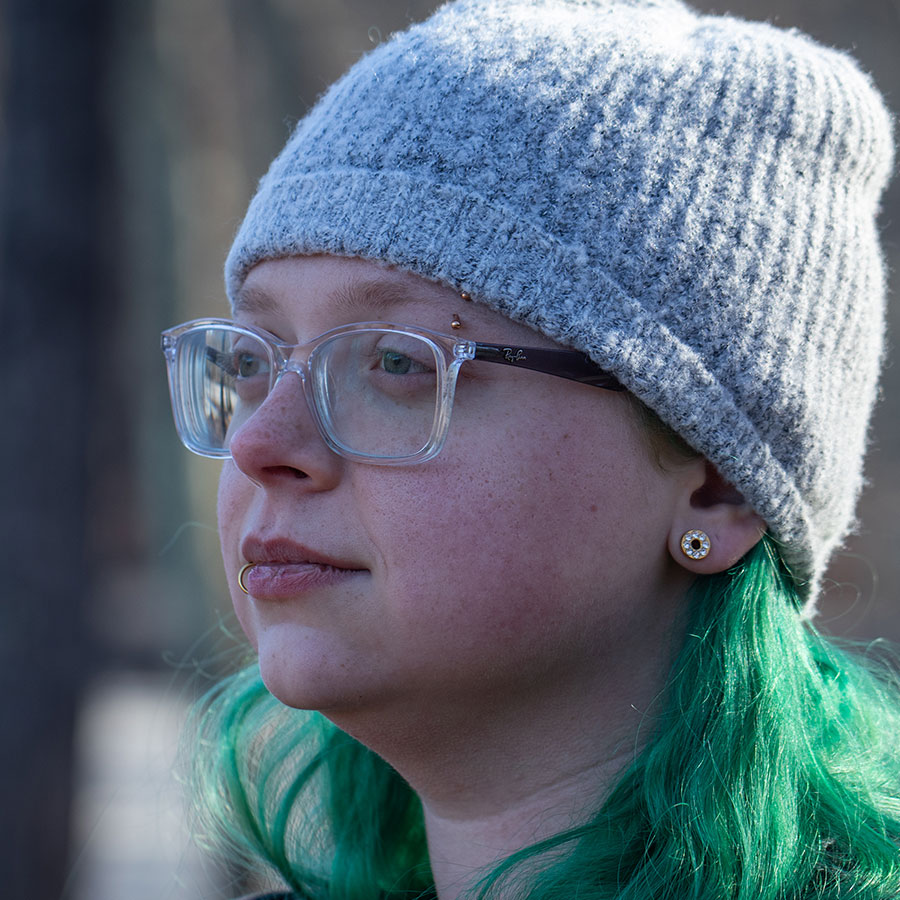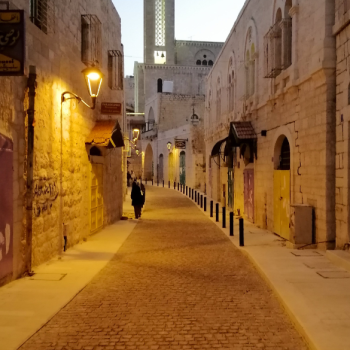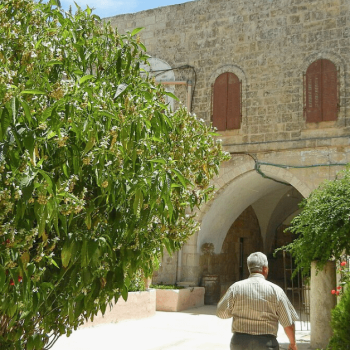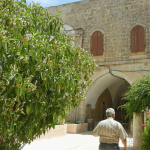If you’ve been to Catholic mass during Advent, you’ve likely noticed the advent wreath, which looks like any Christmas wreath laid flat with four candles—three purple, one pink—and sometimes a fifth white one in the center. Maybe you’ve taken them for granted, but these candles relate to deeper themes you might not have known were attached to the Sundays of the season.
Why I Love Themes
As a person building my own practice, I am interested in the ritual magic of the Church, syncretic folk practice, and the rich symbology and mythology involved and often left unspoken by a modern Church cognizant of their image and antagonistic to mixed tradition.
Structured practices, to me, create rich resources for the discovery and integration of these practices. As someone reaching for traditional practices that have largely been lost to history except in very stripped forms, it provides to my neurodivergent mind a scaffold made of the traditions of my childhood and recent family practice to layer historical research and intuitive revival of torn-up pantheons.
ADHD and Structured Time
On top of it all, ADHD lends toward time blindness as does autism. Often that means difficulty estimating how long a task will take or losing track of time spent on something like a Wikipedia deep dive or TikTok rabbit hole. While we do not know the exact reasons, it is sometimes theorized to be attached to executive functioning difficulties and irregular dopamine pathways.
Neurodivergent time blindness and difficulties with executive function don’t just impact the short term. Folks with time blindness can struggle to retain awareness of passing days or weeks and forget to keep track of appointments, upcoming due dates, and events. Combined with a neurodivergent need for structure and difficulty maintaining it, a practice I will engage consistently will need to mark time and create the novelty that allows an ADHD brain to engage and a rhythm to naturalize.
COVID-19, Time-blindness and Marking Time
COVID-19 left us all feeling lost, and one reason is the disappearance of our normal markers of time. Monday, Wednesday and Friday mean little to us without—excuse the capitalist dread of it all—I hate Mondays, Hump Day and TGIF.
Childhood trauma and grief have been said by experts to disrupt our ability to process time. Amidst the pandemic, many dealt with sudden family deaths and a persistent fear of what would come next for public health and politics. When health fears became a reality, we couldn’t participate in our normal mourning rituals for the deceased.
More mundanely, we lost the ability to connect face-to-face with each other. We missed out on important life events, like celebratory high school senior trips, graduations, weddings, significant birthdays and anniversaries, and more. These things are important too, and they are okay to grieve, okay to mourn. This grief, and the arrested grief of those who do not allow themselves to feel disrupt our normal sense of the world outside ourselves, including how time moves.
Eternity, Evergreens and Origins of the Advent Wreath
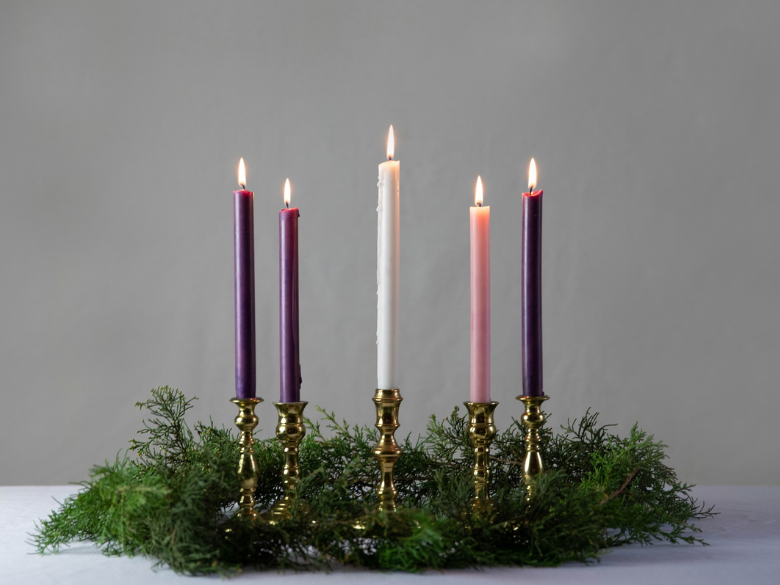
Evergreens are incorporated into the winter traditions of many cultures that were Christianized. These plants are a natural comfort in the dark and cold of winter. With vibrant greens and resistance to the hostility of winter, evergreens become a symbol of life.
During the Winter Solstice and celebrations centered on this time, European cultures incorporated evergreens into ritual practice and spiritual festivities. Various European groups believed their sun gods decreased in power as the days shortened. The solstice brought the promise of their return, of the Sun and life-giving crops and the local life of nature.
One story of the Advent wreath as we know it may be traced to a German Lutheran pastor in the 19th century The pastor, Johann Hinrich Wichern, created a wreath with twenty-eight total candles to countdown the days to Christmas for the children at a mission school. It was composed of twenty-four small candles for each day of the week with the large white ones for Sunday. As the tradition spread, we eventually find various versions in different Christmas sects.
Evergreens connect Catholics directly to the promise of the Gospels. The wreath, as a circle, is another cross-cultural symbol of eternity. The circular wreath reminds us of the infinite; the infinite life promised by God and the infinite love of God. Candles also invoke warmth, life, and light. The lighting of the candles reminds us that Jesus is the Light of the World as Christmas approaches.
The Colors of Time, Liturgical Vestments and the Themes of Advent Sundays
During the liturgical year, priests change the colors of their vestments. These colors serve as a visual cue as a “reflection of the type of celebration”. The candles of the advent wreath align with the vestments of the Advent Sundays and the represented themes.
First Sunday of Advent: Hope Sunday and the Prophets’ Candle
God is faithful; by him you were called into the fellowship of his Son, Jesus Christ our Lord.
This candle is purple, which symbolizes in Catholic vestments a time of penance. This time of penance and somberness might seem strange as Advent is such a celebratory season secularly, and by all rights, the Church is looking forward to the birth of Christ. It is helpful to think of penance as preparation, seeking spiritual purity as this great religious event approaches.
It is called the Prophets’ or Prophecy candle in reference to Isaiah 7:14, which is considered by Christians to prophesize the birth of Christ: “Therefore the Lord himself will give you a sign: The virgin will conceive and give birth to a son, and will call him Immanuel.” The theme of hope this Sunday is the anticipation of a fulfilled promise in Jesus.
Second Sunday of Advent: Peace Sunday and the Bethlehem Candle
But, in accordance with his promise, we wait for new heavens and a new earth, where righteousness is at home. Therefore, beloved, while you are waiting for these things, strive to be found by him at peace, without spot or blemish; and regard the patience of our Lord as Salvation.
The second candle is also purple. The Bethlehem candle relates to the journey Mary and Joseph take to Bethlehem. This candle represents the peace that Jesus will bring to the world, especially after the strife the Jewish people had long experienced.
Third Sunday of Advent: Joy Sunday and the Shepherds’ Candle
I will greatly rejoice in the Lord, my whole being shall exult in my God; for he has clothed me with the garments of salvation, he has covered me with the robe of righteousness, as a bridegroom decks himself with a garland, and as a bride adorns herself with her jewels. For as the earth brings forth its shoots, and as a garden causes what is sown in it to spring up, so the Lord God will cause righteousness and praise to spring up before all the nations.
The third Sunday of Advent brings us to the standout pink candle. This Sunday is known as Gaudete Sunday, which indicates why this is true. This Sunday is a day of joy as Christ’s birth approaches. The pink represents joy and comes only twice in the liturgical year. The other day is Laetare Sunday, the fourth Sunday of Lent.
Laetare Sunday, like Gaudete Sunday, is a day of joy. Both days are days of joy amidst a season of penance, and the change to pink robes for this Sunday visually relays the significance of this day amidst the rest of the season. The Shepherd’s Candle reminds us of the shepherds who travel to Bethlehem to celebrate Jesus’s birth as we will on Christmas.
Fourth Sunday of Advent: Love Sunday and the Angels’ Candle
When your days are fulfilled and you lie down with your ancestors, I will raise up your offspring after you, who shall come forth from your body, and I will establish his kingdom. I will be a father to him, and he shall be a son to me. When he commits iniquity, I will publish him with a rod such as mortals use, with blows inflicted by human beings. But I will not take my steadfast love from him, as I took it from Saul, whom I put away before you. Your house and your kingdom shall be made forever before me; your throne shall be established forever.
The fourth candle is once again purple, and this return is appropriate for the theme of this day. The angels’ candle reminds us of the angels who announced the coming birth of Jesus to the shepherds. On the fourth Sunday, with God’s angels in mind, we focus on the eternal love of God and the message the angels ultimately carry with them: God is showing the expansiveness of his love by offering Jesus. His birth can only end in his death on the cross, a radical act of God’s love.
Five: Christmas Eve or Day and the Christ Candle
In the beginning was the Word, and the Word was with God, and the Word was God. He was in the beginning with God. All things came into being through him, and without him not one thing came into being. What has come into being in him was life, and the life was the light of all people. The light shines in the darkness, and the darkness did not overcome it.
On Christmas Eve or Christmas Day, the final candle is lit. This is the Christ candle, lit for Jesus’s arrival to the world. It is sometimes larger than the other candles and in the center. We set our focus firmly on Jesus’s birth. The white candle and vestments are special for Christmas and Easter. White represents light, the light of Jesus, and often represents purity and holiness. Thus, we save these vestments for the holiest of days, and it is the candle that symbolizes Christ that has this color.
Crafting New Practices
If you building your own practice, an Advent wreath in your home might be a great visual reminder of the themes of this special season. It can also be a way to incorporate more regular, weekly practice if this is something you want but struggle with.
Remember, you can always try something and see if it works for you. Themes, readings, and practice, or even the makeup of your wreath can change according to your need if you are a solo or home practitioner. I find that I can feel silly when attempting to engage religious ritual, but reminders of my past practice that I grew up with help me remain comfortable enough to connect and engage new practices that I truly believe in.


